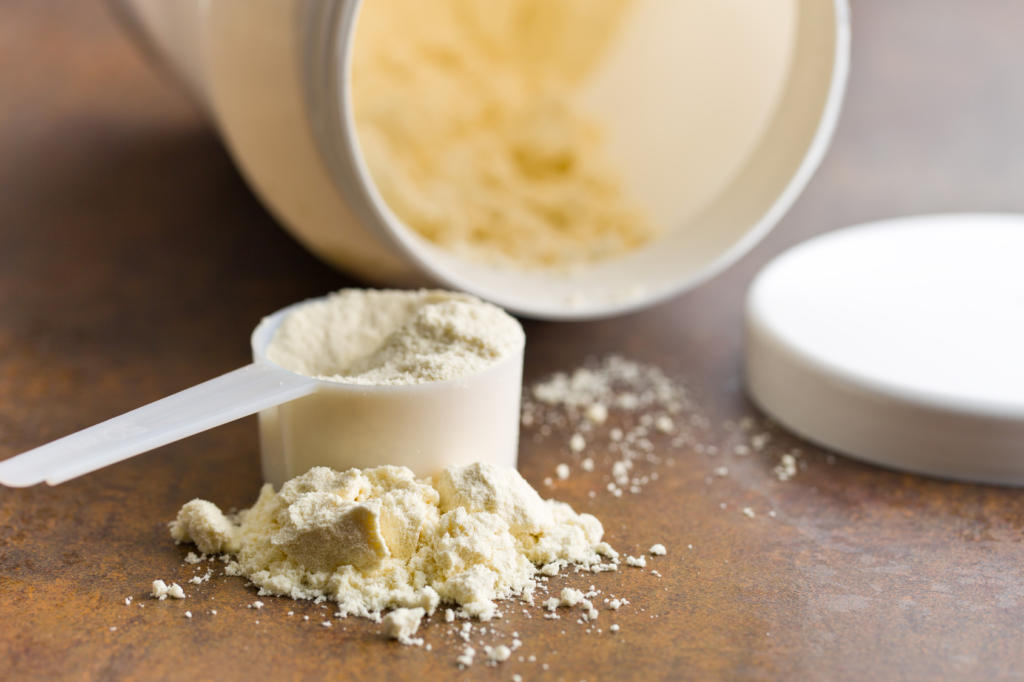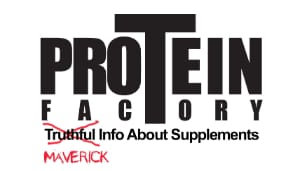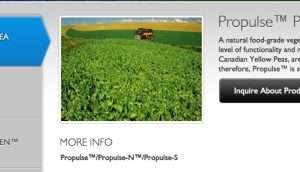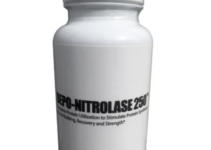Natural Whey Protein & Regular Whey Protein Powder Ingredients
If you have ever searched the internet for protein powders, you have certainly noticed that there are a lot of different types of proteins to choose from. Beef, egg, and casein protein are all good choices, but whey protein has long been the go to supplement for fitness enthusiasts and athletes.
Whey protein can also be broken down into 2 categories—whey and natural protein. While both protein choices are made up of whey, the added ingredients (if any) will be significantly different. Looking closely at the ingredients will determine which is right for you.
What Is Whey?
Before we get too far down the ingredient tunnel, it’s important to understand what whey protein is and where it comes from. Unfortunately, there are a lot of misconceptions about what exactly whey protein is, and for the matter, what it’s not.
Remember the phrase “milk does the body good”? The reason that it’s so good for you is because it’s an amazing source of two different proteins; whey and casein. In fact, milk is made up of 80% casein protein and 20% whey.

the whey protein in scoop
During the cheese making process, the casein and whey protein become separated. Whey protein is the liquid byproduct that you may have even seen in its raw form, firsthand. If you have ever opened a yogurt container and noticed a water substance accumulating on the top—that’s whey.
Once the whey has been separated, the water is removed by a process referred to as reverse osmosis and vacuum evaporation. Then it’s spray dried and crushed into the powder that you are more familiar with.
So, whey protein is a direct derivative of something that you probably consume on a daily basis—milk. This is far from what many people would have you believe. Whey is not made in a lab, it’s not synthetic or unnatural, and it is most definitely not an anabolic steroid.
The Source Of Whey And Natural Whey
Now that we are completely clear about the origins of whey protein powder, we should clarify the differences between whey and natural protein. If you go directly to the source of whey protein, you’ll find that the first major difference is the cow that it comes from.
Regular whey protein is developed on a large scale and commonly sourced from cows that are fed grain and given hormones that increase their milk production (rBGH). Unfortunately, rBGH may cause adverse health effects in treated cows.
On the other hand, natural whey protein is typically sourced from grass-fed cows that are not treated with any hormones or antibiotics. While not the focus of this article, it should be noted that consuming whey from grass-fed cows provides the following benefits over regular whey:
- Higher levels of omega 3-fatty acids
- Higher levels of conjugated linoleic acids (CLA)
- Contains immunoglobulins (antibody transporter)
- Contains cysteine (a vital component of good health)
It’s pretty obvious that there is a significant difference between the cows that both of the respective whey proteins are sourced from. There is another big discrepancy between that two. One that you can easily see by looking on the side of their containers.
Number Of Ingredients
Although this is the second main difference that is listed, it’s no less important or distinguishing. By holding a container or regular whey and natural whey protein side-by-side, you can easily compare the ingredients labeled in the nutrition facts chart.
You will quickly see that the regular whey protein powder has an exponentially higher number of added ingredients compared to the natural whey. In fact, it’s not unusual to find 10, 12, 15, or more ingredients added to regular whey.
If you take a look at your typical natural whey protein label, you will find a much simpler, and shorter, list of added ingredients. The number will commonly range from 4-1, or even 0. This means that there are less ingredients for your body to breakdown before it gets to the protein.
The reason for such a drastic difference in the number of components is due to the fact that natural whey protein powders do not use artificial sweeteners or ingredients. In case you are not aware, many of these “artificial ingredients” can ruin the quality and effectiveness of your whey.
This all comes back to a term referred to as “protein spiking”. This is when a manufacturer adds non-protein ingredients to their whey protein to keep the production cost low and their profit margin high. These additives are completely worthless and don’t benefit you at all.
Regular Whey Protein Ingredients
Now it’s time to take an even more in debt look at what all these ingredients are, what they’re for, and how they affect you. Although ingredients will vary from company to company, there are some that we can refer to as “the usual suspects”.
Take a look at any random container of regular whey protein powder and you will probably see many, if not all, of these added ingredients:
- Acesulfame Potassium– This is an extremely sweet potassium salt that is commonly used for baking. In fact, it is 200x sweeter that regular sugar. You may find this in your protein it’s an effective way to sweeten the taste while keeping the sugar count low.
- Cellulose Gum– Cellulose gum is very cheap and is used to stabilize and thicken many whey protein powders. This is a synthetic chemical can’t be digested by the human body. It’s interesting to note that some other places that you can find cellulose gum includes detergents, ice packs, paints, and even K Y Jelly.
- Cocoa Processed with Alkali– Cocoa, by itself, is a completely natural ingredient that is used for all kinds of baking and gives you that dark cocoa taste. However, many companies process it with alkali to make the protein powder darker and give it a lighter taste. It’s actually used in many baked and processed foods as well as other chocolate non-protein drinks.
- Corn Syrup Solids– Corn syrup is an interesting ingredient. While it originates from a vegetable, it has already been genetically modified before it’s ever even processed. The modified corn is soaked in a solution that leaves you with a substance made up of starch and gluten.
- Dipotassium Phosphate– This simply a form of salt that is used to control acidity and reduce clumping in many processed foods.
- Disodium Phosphate– A combination of salt and phosphoric acids that is a cheap way for protein companies to bypass the use of (more expensive) natural salts. Just like salt and other phosphates, disodium phosphate is used to enhance the flavor of food products.
- Lactase– Lactase is used to make lactose easier for the body to absorb. It is found in many milk products like ice cream and chocolate milk.
- Natural and Artificial Flavors– There’s no way around this one; especially in regular whey protein powders. Natural and artificial flavors are found in almost every processed food there is. As we discussed earlier, this is one of the significant differences that can be found between regular and natural whey protein powders. A natural whey will be void of artificial flavors.
- Phenylalanine– This is a naturally occurring amino acid that can be found in most protein-rich foods. Phenylalanine is used to increase cognitive function and alertness. It’s even sold a nutritional supplement.
- Polydextrose– This can be used as a fiber-bulking agent to reduce the total amount of sugar in whey protein powder. Polydextrose is typically used in foods that need to be low in fat, starch, and/or sugar. This makes it an ideal ingredient for food used by diabetics.
- Potassium Chloride– Another member of the salt family, potassium chloride is a bitter electrolyte used in sports drinks and dietary supplements.
- Potassium Citrate– This is a product of mixing potassium salts and citric acids. It can be found in whey protein powder to balance out its acidity.
- Soy Lecithin– This is an extremely common “spiker” found in many whey protein powders. Soy lecithin is actually extracted from soy beans by a process using rough chemicals. At the conclusion of processing, the remaining waste is bleached and used as a cheap emulsifier in processed foods.
- Sucralose– Sucralose is a man-made mixing and bulking agent that you may have heard of before. It’s very heat-stable and doesn’t attract moisture. It’s used in a lot of processed foods that need to have a long shelf life. Unfortunately, the majority of sucralose is not able to be digested by the human body and may cause digestion issues with other ingested foods.
- Xanthan Gum– Some type of gum (or combination of gums) will be found in almost every container of regular whey protein powder. Xanthan gum is nothing more than fermented corn sugar that is ground into a fine powder. It’s used in protein powders to help thicken it and give it a longer shelf life.
- Sodium Chloride– After listing different chloride variations, we have finally come to the most common one yet—sodium. Sodium chloride is just plain old table salt that is used in processed and unprocessed foods alike. It is mostly commonly used as a food preservative and a flavor enhancer, but is also used for medical treatments.
Natural Whey Protein Ingredients
If you have made it this far, than you have proven that you take your nutrition seriously. If you pick up a container of natural whey protein powder you will find just a few added ingredients including:
- Sunflower Lecithin– Unlike soy lecithin, lecithin derived from sunflowers can be very beneficial to hear health. However, it gets replaced by soy lectin due to its higher production cost.
- Stevia Leaf Extract– Stevia extract is a natural sweetener that is used instead of artificial sugars in a growing number of foods. It’s calorie free and is around 100 to 300 times sweeter than sugar.
- Cocoa– As mentioned in the list of regular whey protein ingredients, there’s nothing wrong with cocoa be for it is processed. Unprocessed cocoa is a good antidepressant as well as powerful antioxidant.
- Fructose– Fructose (fruit sugar) is used to replace sucrose in natural whey protein powders. It is used for its sweet taste and flavor enhancing properties. When compared to other forms of sugar, fructose triggers a much smaller release of insulin in the body.
- Natural Flavors– Again, natural flavors makes it on our list. Describing what exactly natural flavors are can be difficult. It will actually differ from country to country, but it is generally any flavoring that comes from a living plant or animal.
The Takeaway?
After looking at many of the commonly added ingredients of regular whey protein powder, you may have noticed that not all of them seem to be bad for you. Actually, some of them are may even be necessary for healthy life function (salt).
Well, it’s true, not all added ingredients are bad for you. However, the vast majority will not help you achieve your fitness goals and are certainly not necessary. This is also not to say that there aren’t any high-quality whey protein powders on the market either.
Be sure to do your research by taking a quick look at the ingredients listed on the back of the protein container. Determine if this is the right protein for you or if it’s just a bunch of filler.
After looking at the list of natural whey protein powder ingredients, it’s clearly much smaller. Actually, most natural whey proteins will be made up of 2 or less added ingredients. If you are concerned about too many additives, then this may be your best choice.
From the treatment of the cows that they are sourced from, to the number of added ingredients; the differences between natural whey protein powder and regular whey protein are significant, to say the least.
If you are living a lifestyle that is centered on health and fitness, getting the highest quality, cleanest, whey protein should be at the top of your to-do list.
Alex Rogers is a supplement manufacturing expert. He has been formulating, consulting, & manufacturing dietary supplements since 1998. Alex invented protein customization in 1998 & was the first company to allow consumers to create their own protein blends. He helped create the first supplement to contain natural follistatin, invented whey protein with egg lecithin, & recently imported the world’s first 100% hydrolyzed whey.






